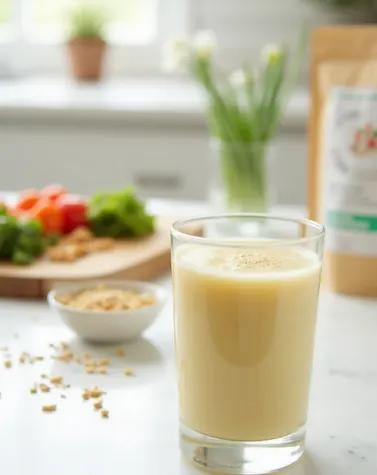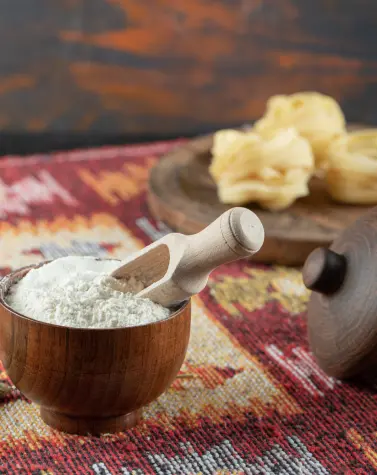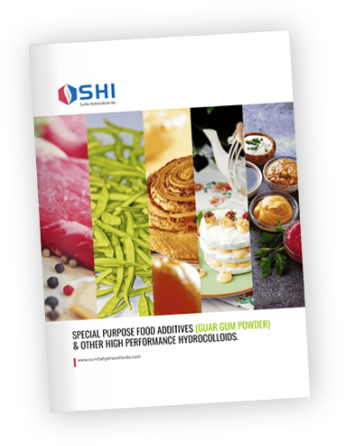
Guar Gum vs Agar Agar: Which Thickener is Best for Your Recipes?
Whether you’re preparing a creamy soup, a vegan jelly or gluten free bread, thickening agents help you achieve the exact texture and consistency you want. Guar gum and agar agar are two popular natural thickeners with different origins, benefits and culinary applications.
Guar gum is a plant based powder from guar beans which is helpful in gluten free baking. Agar agar is a seaweed derived alternative to gelatin which is a well known gelling agent in vegan and Asian cuisines. Understanding the properties of guar gum and agar agar gum helps home cooks and food manufacturers choose the right thickener for every recipe.
Properties of Guar Gum
Guar gum is a soluble fiber that we get from the endosperm of guar beans. It displays properties such as:
- Strong thickening capability at very low concentrations
- Neutral flavor and effective at low dosages
- As a cornstarch substitute, guar gum powder provides structure and elasticity in gluten free baking
- As a xanthan gum alternative, guar gum powder delivers a similar viscosity in dressings, sauces and baked goods.
- Unlike starches that require heat, guar gum thickens cold liquids effectively
The above mentioned characteristics of guar gum have made it a favorite in commercial and home kitchens alike.
Properties of Agar Agar
Agar agar is derived from red algae so it is 100% vegan and often used as a gelatin alternative.
- Unlike gelatin, agar agar sets at room temperature and remains stable even in warmer environments.
- Agar powder can thicken soups and sauces or serve as a base for molecular gastronomy applications.
- It’s widely used in jellies, puddings, vegan cheeses and Asian desserts like Japanese kanten or Chinese almond jelly.
- A go to thickener for vegan cooking, agar delivers firm, sliceable textures that gelatin can’t, in non animal dishes due to its gelling properties
Guar Gum & Agar Agar Thickening Agents – A Comparison
Here’s how guar gum and agar agar stack up side by side.
| Feature | Guar Gum | Agar Agar |
| Source | Guar Bean | Red Algae (Seaweed) |
| Best for | Cold thickening, baking | Gelling hot liquids, jellies |
| Vegan | Yes | Yes |
| Gluten Free | Yes | Yes |
| Forms | Powder | Powder, flakes, bars |
| Gelling Capabilities | Not self gelling | Forms gels at room temp (after boiling) |
| Primary Use | Viscosity in batters/soups | Gels, jellies, custards |
| Price | Cheaper | Expensive |
Guar gum in the food industry is used for smooth thickness in cold preparations and batters, while agar agar is used when you want a firm gel or a solid set structure in your desserts.
Benefits of Guar Gum & Agar Agar Thickening Agents
Using thickeners like guar gum and agar agar offers significant advantages such as:
- Smooth and consistent texture
- Reduced fat and sugar without sacrificing mouthfeel
- Extended shelf life especially in sauces and refrigerated items
- Support to dietary needs as both are vegan, gluten free and plant based
For health conscious and allergen sensitive consumers, these thickeners are functional, natural and safe.
Guar Gum & Agar Agar in Recipes
You’ll find these thickeners in all sorts of recipes.
- Guar gum – It is good for soups, sauces, gluten free bread and ice creams where cold thickening and moisture retention are important.
- Agar agar – It is ideal for vegan jellies, fruit based desserts, cheese spreads and panna cottas.
Both guar gum and agar agar are often combined with xanthan gum for additional viscosity in dressings and custards. You just need to understand how each behaves in hot or cold temperatures and experiment with blends when needed.
Guar Gum vs Agar Agar Gluten Free Recipes
Gluten free recipes benefit immensely from thickeners.
- Guar gum – adds structure to bread, cakes and cookies and prevents crumbling and is also good for thickening soups, gravies and batters.
- Agar agar – plays a supporting role in puddings and fruit gels for gluten free menus.
Many gluten free recipes combine guar gum, xanthan gum and starches to get a better texture and rise.
Guar Gum vs Agar Agar Vegan Cheese Recipes
In plant based cheese formulations,
- Agar agar – gives a firm, sliceable texture, great for block cheese or spreadable wheels.
- Guar gum – gives creamy meltability and mouthfeel, often in cheese sauces or mozzarella style blends.
Both gums are often combined with carrageenan for stretch and xanthan gum for viscosity. Soy milk or oat milk is often the base, thickened and stabilized with these agents to mimic dairy cheese behavior.
Guar Gum & Agar Agar In Desserts
Most desserts benefit from using multiple thickeners to achieve the desired mouthfeel and stability.
- Agar agar – dominates in jellies, fruit custards and layered desserts due to its high gel strength.
- Guar gum – when combined with other starches like tapioca or cornstarch works in frozen desserts, mousses and creamy puddings.
Which thickening agents can be a Substitute for Agar Agar?
If you don’t have agar agar, you can use the following thickeners:
- Guar gum: Works well in savory sauces and baked goods and is 50 times cheaper than agar.
- Cornstarch and tapioca starch: Good for thickening but lack agar’s gel strength.
- Arrowroot powder: Works in clear sauces and some desserts but is heat sensitive.
When substituting, be sure to adjust liquid ratios and cooking temperatures to compensate for different behaviors.
How to Choose Between Guar Gum & Agar Agar?
When choosing between guar gum and agar agar, ask yourself if you need a gel or just thickening, whether you are serving your recipes hot or cold and whether you want to opt for vegan or gluten free dishes or not. Use guar gum for smooth and consistent textures in cold or baked recipes. Choose agar agar for firm gels, vegan jellies and cheese alternatives.
Both the thickening agents have their own strengths and in a lot of cases, a combination of these two can deliver the best results. Master their use to get an edge in both home cooking and food product development.





